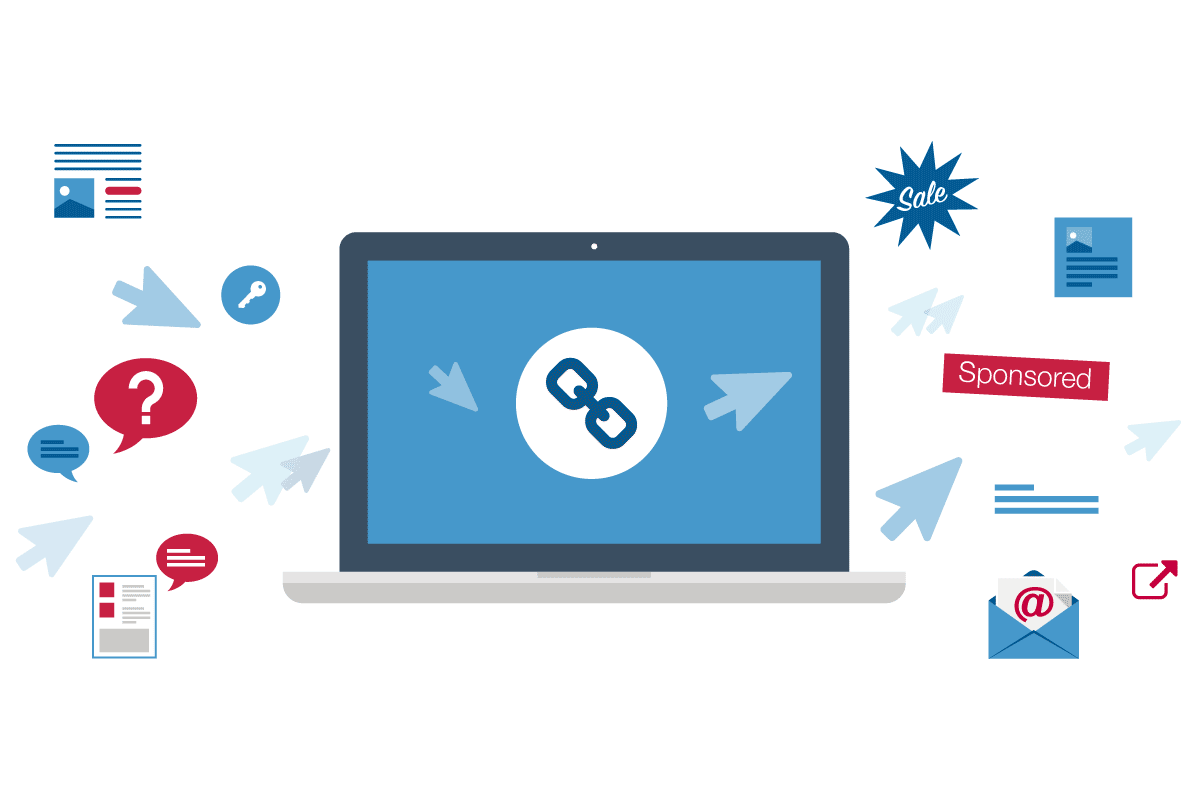Types of Link-Building That Will Boost Your Site’s Search Ranking

Having the right types of links on your website is one of the best ways to improve your search ranking, boost traffic, establish the authority of your site, and improve the customer experience. Here are the three types of links that are crucial for your website.
Backlinks (Inbound Links)
Backlinks—incoming hyperlinks from other websites to yours—are one of the top 10 most important Google ranking factors. But while SEO experts used to try to get as many backlinks as possible to boost search rank, that’s no longer the right approach. When it comes to backlinks, quality matters. Here’s how to get great backlinks.
Create valuable content that generates interest. The best way to get quality backlinks is to create valuable content that organically generates links from websites that want to share that content with their visitors.
Find good linking candidates and ask them to link to your site. Check out your competitors and see what sites are linking to their site. A good place to start is SEMrush, which lets you type in a competitor’s URL and see where all their backlinks are coming from. Once you've created great content, reach out to those site owners, as well as other online authorities and influencers in your industry, to ask them to link to your site.
Look for high-authority domains. There is speculation that backlinks from domains with the .edu extension are given extra search ranking value because that extension can only be used by U.S. post-secondary educational entities that are institutionally accredited. Government domains (.gov) also make for high-authority links.

Aim for link diversity. Google pays close attention to link diversity, so it’s better to have a single link from a wide variety of quality sites than many links from one site. Look for good link prospects from a diverse pool of sites.
Remove or disavow bad links. No one has to ask to link to your site, so you may get links from less-than-credible sites, and that can hurt your site’s ranking. Be sure to regularly check the links on your site with Google Search Console. If you see any low-quality links, either contact the source website and ask it to remove the link, or use the disavow links tool in Google Search Console to ask Google not the take those links into account when assessing your site.
Outbound Links
Backlinks are the most important type of link, but outbound links—links from your website to other sites—can also improve your site’s search ranking. In a list of Google’s 200 ranking factors, Backlinko put outbound link quality at #35.
Look over the content on your site and identify places were an outbound link might be valuable to your site visitors, such as a link to a research source or a related or more in-depth piece of content (like the link to the full list of Google ranking factors above).
Creating outbound links to legitimate sites will not only provide value to your visitors, it will boost the authority of your own site. Be sure to configure your links so they open in a new window, so the current browser window stays open in case your readers want to navigate back to your site after they're done perusing the link.
Internal Links
Internal links—links that go to other pages within the same website—help your site visitors find related content on your site, which keeps them on your site longer.
Internal links also help search engines understand your site architecture, see how the content on your site is related, and identify the most important pages on your site, all of which can boost your search rankings and enable your content to be more easily found by users.
Whenever you add a new blog post or other content, be on the lookout for opportunities to link relevant content on your site to the new post. Do a content audit to identify your most popular pages and insert links on those pages to other relevant content to spread the link authority or “link juice” throughout your site.
Make sure you use anchor text (the highlighted or underlined text that you click to follow the link) that contains keywords relevant to the destination page rather than something generic like “click here.” For multiple links to the same internal page, make sure you vary the anchor text so you rank for multiple queries.


